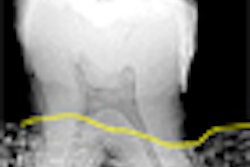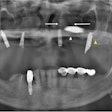
Despite significant increases in the price of x-ray film -- due primarily to the rising cost of oil and precious metals in recent years -- conventional x-rays are not likely to disappear from dentistry any time soon, according to a leading provider of dental imaging products.
That said, it could entice more dental practitioners to begin looking at transitioning to digital radiography.
Carestream Dental announced last month that it was raising the price of its medical, dental, and nondestructive testing films worldwide -- in some cases by as much as 50%. This follows a 25% price increase announced in December. In the dental space, the most recent film price increase was about 9%, according to Robert Patrick, director of U.S. product line management at Carestream, which sells the Kodak line of dental film products and digital imaging systems.
a half.”
— Robert Patrick, director, U.S. product
line management, Carestream Dental
"Silver prices exploded over the last year and a half, which resulted in the increased cost of film across the board," he said.
Not only did silver prices double in the last 12 months, they have experienced a fivefold increase over the last six years, Patrick noted. In addition, oil prices have risen 30% in the last year, which increases the cost of utilities, transportation, and the petroleum-based polyester used in the production of film.
"And all things indicate that precious metals will not be going down anytime in the near future, so we will see film prices continue to increase," he said.
So what does this mean for digital radiography?
"We estimate that the overall digital adoption rate [in dentistry] is 40% to 50%, but we see this increasing more rapidly in coming years as more dental schools and postgraduate programs switch to digital radiography," Patrick said.
Other vendors agree.
"There are a multitude of reasons for adopting digital imaging technology -- lower radiation, easier sharing of images with insurers and other physicians, and improved patient education, to name a few," said Mary Harp, director of the film digitizer business at Vidar Systems. "The rising cost of dental film will certainly cause each facility to rerun their financial calculations regarding a full or partial transition to digital."
At the Indiana University School of Dentistry, for example, film will continue to play a role for the next few years as the school transitions to digital radiography.
"We are preparing to go digital in the near future," said Gail Williamson, RDH, MS, a professor of dental diagnostic sciences in the department of oral pathology, medicine, and radiology. "Despite the cost increase, we will need to continue to order and use film until our transition is complete in the short term."
Dental schools often receive some price breaks due to the volume of the order and the educational setting, she added.
In fact, film cost is just one of many factors that are slowly but surely pushing more dental practices to consider going digital.
"As the price of film keeps escalating, the enticement to go digital becomes greater," said Martin Jablow, DMD, a dental technology expert. "When the ongoing costs of film, chemistry, etc. push higher, the fixed costs of digital look better. Besides -- digital is green!"
And while Patrick agrees that, going forward, digital radiography will continue to find new fans in dentistry, he also believes that film will have its place "for many years to come."
"It's not going to become extinct like photography film did, which seemed like it was literally overnight," he said. "But the digital radiography adoption rate is growing also and will continue to increase in penetration over the next several years."



















